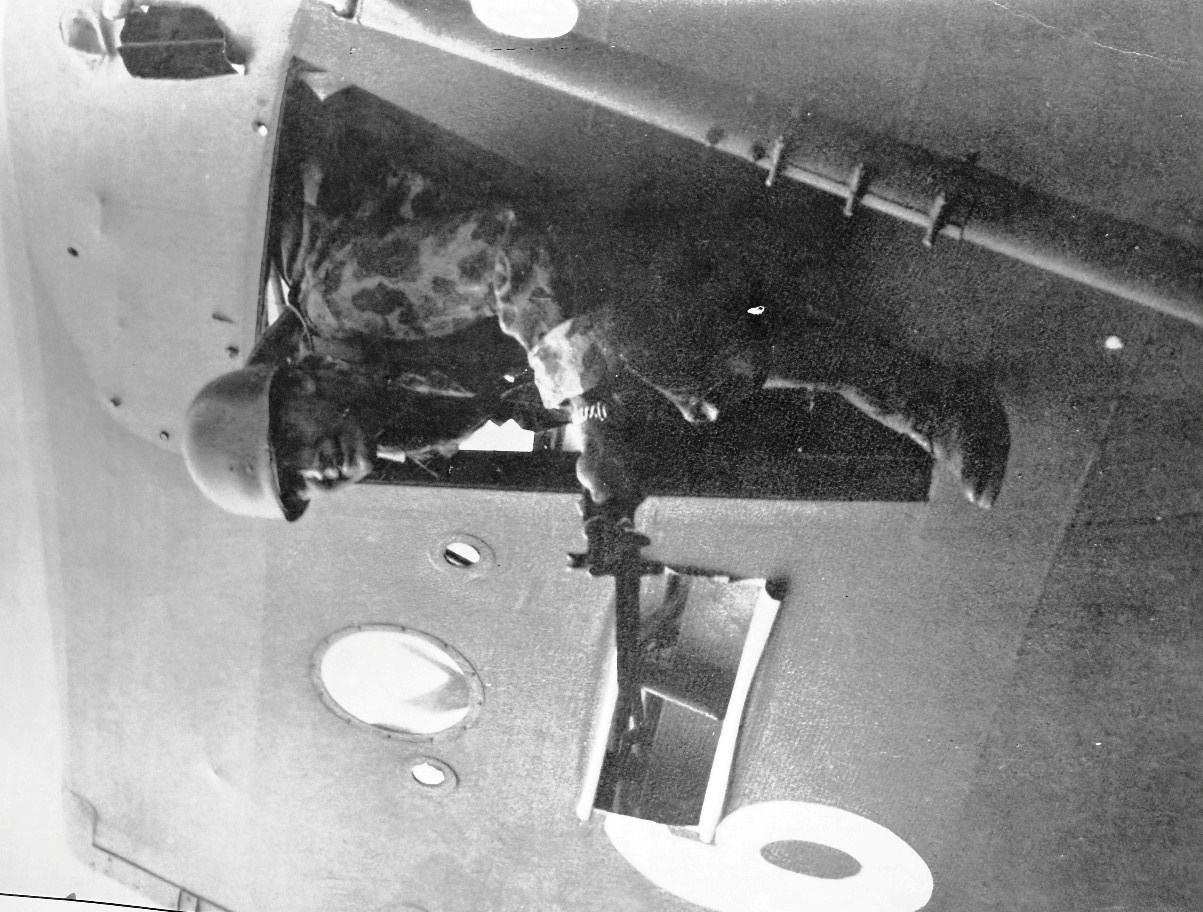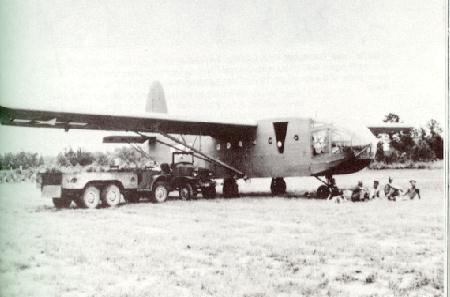|
The CG-13A pictured above was the only glider of this model to see combat. Boasting a wingspan of 85’ 6 3/4", the CG-13A could transport 30 combat troops, double that of the CG-4A. The depth of the cargo compartment and the strength of the reinforced floor enabled the CG-13A to carry a 105 mm howitzer complete with a jeep, or a 1 1/2 ton 6 by 6 truck loaded with supplies. A unique feature provided a tricycle landing gear on the production model.

CG-4A of the 1st Procisional Glider Group getting ready for the Aparri mission. Don Saraceno Collection
The month of June 1945 was a busy month for the 433rd Troop Carrier Group. It was the month that they moved from north of Dau, Luzon, P.I., on the west side of the main Manila Highway to Clark Field at Lipa. The area is 1600 feet by 1200 feet. It is rather low but has a gentle grade from west to east and southeast. It was a rice field, and before it could be used the irrigation ditch had to be closed and filled; and the dikes leveled. The soil is a sandy loam which makes a good absorption of any surface water. The weary hours, days and weeks of intensive training with gliders and paratroopers at Lipa were just the curtain raiser for the real show which even then was being planned HQ.
Camalaniugan, a Jap-held base just south of Aparri, was designated as the target for the airborne invasion. This was the first time that planes of the 433rd were taking place in a paratroop drop under combat conditions. Lipa was the home for the attack on the morning of 23rd June, as transports (2 from the 67th, 4 from the 68th, 6 from the 69th and 3 from the 79th ) loaded with paratroopers, full field equipment, supplies and towing 7 glider, took off in a period of 28 minutes. Plan #617 of the 67th had the honor of towing the huge CG-13 glider piloted by Major Milau. This glider was greatly overloaded and then she took to the air it weighed more than 17,000 pounds. Captain Brown, the pilot of 7317, had to use every foot of the short 4,000 foot runway to get the gargantuan ship into the air.
All 65 planes followed a prescribed rout which proceeded from Lipa to San Fernando Point, northeast of Lingayen, thence up the west coast of Luzon to Candon which was designated the rendezvous point. From the rendezvous point it was northeast across the mountains to the drop area southeast of Appari. The paratroopers were dropped precisely at 0900. The glider formation reached the target between 12 and 15 minutes later and were released from an altitude of between 500 and 550 feet, made a 270 degree approach and landed safely on the strip. The 68th squadron dropped 131 paratroopers, mortars, machine guns, ammunition, and 3 Para bundles. Of the three 69th planes making the trip, one, [aircraft] #356, piloted by Lt. Hays, towed a glider containing a jeep, and ammunition and two mortars. The other two planes carried 70 paratroopers but only 69 made the jump, one froze in the door of #374. Major Jones Wize, Commanding Officer of the 79th Squadron, led the glider towing ships into the target area. The four 79th ships towing glider cut loose from 33,290 pounds of ammunition and equipment while the remaining 79th plane dropped 9,000 pounds of fully equipped paratroopers.
The operation was considered a complete success by all concerned and General Krueger, Commanding General of the 6th Army, commended all troop carrier unites that took part in the drop and glider tow. Despite the fact that thousands of words on the drop were sent back by correspondents, and hundreds of pictures were taken of this &ldquo:daring”air invasion most of the personnel stuffed a let-down (mentally) after it was all over. When they returned to their bases they were told that the Filipino guerrillas were already in control of the area and had Camalaniugan in their hands when the transports and gliders appeared over-head. There was no Jap opposition and for all practical purposes the Aparri show could be considered another training phase. There were no battle casualties but one paratrooper was killed when his grenades exploded. In fact not a shot was fired. Seventy-five paratroopers suffered broken legs when they were dragged by their parachutes after they had sunk into the soft mud in the jump area.
--------------------------
433rd Troop Carrier Group historical June narrative on Appari, U.S. AFHRA B0543
National WWII Glider Pilots Association. Worl War II Glider Pilot Turner. 1991
|
